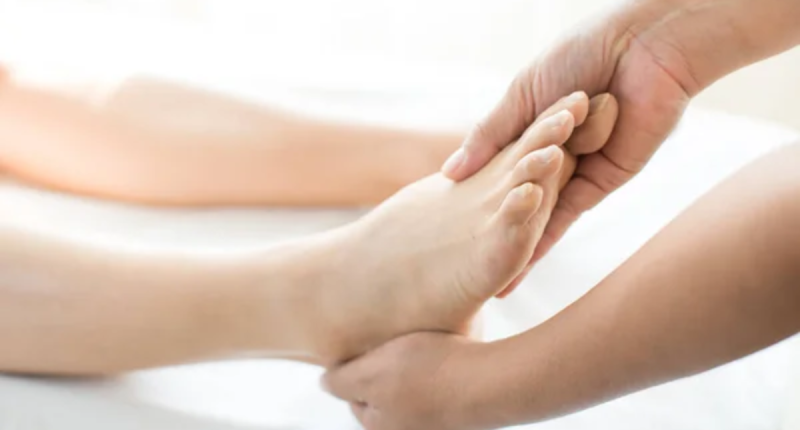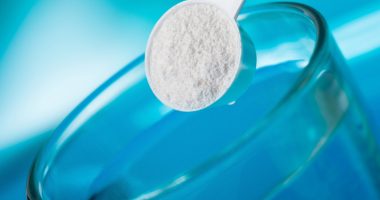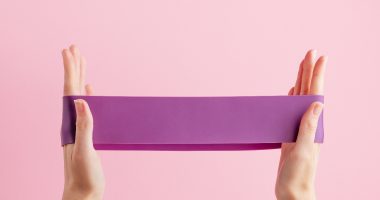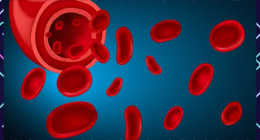Can Enhancing Leg Circulation with Natural Herbs Work? Yes. Leg circulation is the flow of blood throughout the veins and arteries in the legs. It is important for delivering oxygen and nutrients to the leg muscles and tissues, and for removing waste products. Poor leg circulation can lead to a variety of problems, including leg pain, swelling, cramps, and numbness.
There are a number of things that can contribute to poor leg circulation, including age, obesity, diabetes, smoking, and high cholesterol. However, there are also a number of things that can be done to improve leg circulation, including exercise, weight loss, and lifestyle changes.
One way to improve leg circulation is to use natural herbs. A number of herbs have been shown to be effective in improving blood flow and circulation.
Here is an overview of some of the most popular natural herbs for enhancing leg circulation:
Cayenne Pepper
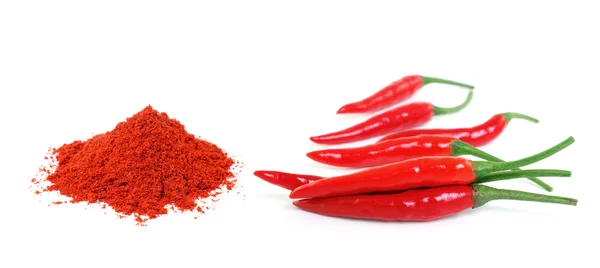
Cayenne pepper is a popular spice that has been used for centuries to improve blood circulation. It contains a compound called capsaicin, which is responsible for its spicy flavor and many of its health benefits.
Capsaicin works by dilating blood vessels, which increases blood flow. This can be helpful for people with poor leg circulation, as it can help to reduce pain, swelling, and other symptoms.
To use cayenne pepper as an herbal remedy to improve leg circulation, here’s how to go about it:
Ingredients:
- 2 tablespoons of cayenne pepper
- 1/2 cup of olive oil or coconut oil
- Beeswax (for consistency)
Instructions:
- Prepare the Cayenne Pepper and Oil Mixture:
- Mix 2 tablespoons of cayenne pepper with 1/2 cup of olive oil or coconut oil in a heat-resistant container. The oil will help extract the beneficial capsaicin from the cayenne pepper.
- Heat and Infuse the Mixture:
- Gently heat the cayenne pepper and oil mixture over low heat. Use a double boiler or a heat-resistant container in a pot of simmering water. Stir occasionally.
- Heat the mixture for 1-2 hours. This allows the capsaicin to infuse into the oil.
- Strain the Mixture:
- After heating, strain the mixture through a fine sieve or cheesecloth to remove any solid cayenne pepper particles. You should be left with a smooth, infused oil.
- Adjust Consistency with Beeswax:
- If you find the oil to be too thin, you can add beeswax to achieve your desired consistency. Melt the beeswax and mix it into the oil until it thickens to your liking.
- Cool and Store:
- Allow the cayenne pepper salve to cool, and then transfer it into a clean, airtight container.
- Application:
- To use the cayenne pepper salve, apply a small amount to the affected area of your legs.
- Gently massage the salve into your skin, using circular motions. Be cautious not to apply it to open wounds or areas with broken skin.
- The warming sensation from the capsaicin may be intense initially but should subside after a few minutes.
- Caution:
- Wash your hands thoroughly after applying the salve to prevent unintentional contact with your eyes or other sensitive areas.
- Avoid applying the salve just before or after taking a hot bath or shower, as this can intensify the sensation.
Ginger
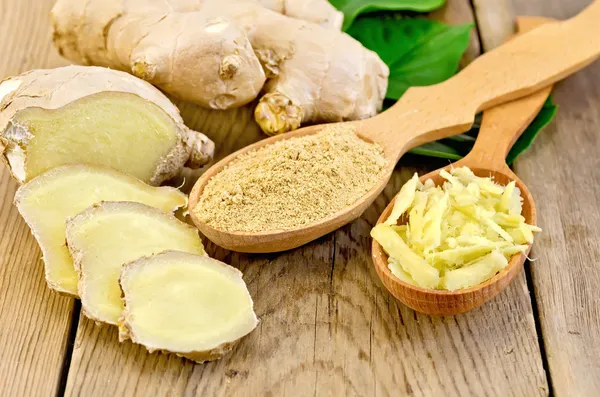
Ginger is a widely recognized herb with a long history of use for enhancing blood circulation. Its active compounds, gingerols and shogaols, contribute to its numerous health advantages, including its capacity to boost blood flow.
The recommended ginger intake for promoting leg circulation may differ according to individual requirements. Nevertheless, a general suggestion is to incorporate 2-4 grams of ginger into your daily routine. You can achieve this by including ginger in your meals, sipping ginger tea, or taking ginger capsules or supplements.
Here are ways you can use ginger herb for leg circulation;
- Ginger Tea:
- Slice or grate fresh ginger root (about 1-2 inches).
- Boil the ginger in water for 10-15 minutes.
- Strain the tea and drink it.
- You can enjoy ginger tea several times a day to promote circulation.
- Ginger Compress:
- Grate fresh ginger and place it in a clean cloth.
- Apply the ginger compress to the affected leg for 10-15 minutes.
- The warmth and ginger’s potential circulation-enhancing properties may be beneficial.
- Ginger Oil Massage:
- Mix a few drops of ginger essential oil with a carrier oil, such as coconut or jojoba oil.
- Gently massage the oil mixture into the legs in an upward motion.
- This can help stimulate blood flow and provide a soothing effect.
- Dietary Incorporation:
- Add ginger to your meals when cooking. It can be used in stir-fries, soups, and various dishes to introduce its flavor and potential health benefits into your diet.
- Supplements:
- Ginger supplements, available in the form of capsules or extracts, can be taken as directed on the product label.
- Ensure you follow the recommended dosage and consult a healthcare professional if you’re uncertain.
RELATED: Ginger Herb: Health Benefits, Uses, Side Effects and More
Garlic
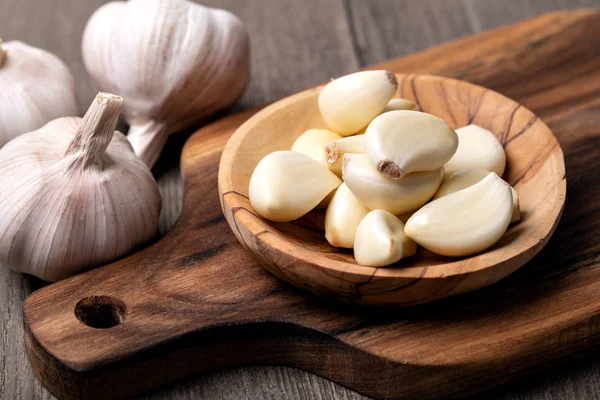
Garlic has been shown to be effective in improving leg circulation in a number of studies. For example, one study found that garlic was effective in reducing pain and swelling in people with varicose veins. Another study found that garlic was effective in improving blood flow in people with intermittent claudication, a condition that causes leg pain when walking.
The reason why garlic is considered potent for leg circulation is because it contains compounds called allicin and ajoene, which are responsible for its many health benefits, including its ability to improve blood flow.
Allicin and ajoene work by dilating blood vessels and improving blood flow. They also help to reduce inflammation and improve blood vessel function.
In addition, garlic contains other compounds that can help to improve leg circulation, such as:
- Vitamin C: Vitamin C is an antioxidant that helps to protect blood vessels from damage.
- Vitamin E: Vitamin E is another antioxidant that helps to improve blood circulation.
- Niacin: Niacin is a B vitamin that helps to dilate blood vessels and improve blood flow.
To potentially use garlic to help improve leg circulation, you can consider the following methods:
- Raw Garlic:
- Consume raw garlic by crushing or finely mincing a clove of garlic.
- Swallow it with water or mix it with honey to make it more palatable.
- You can do this daily, as it’s a simple way to incorporate garlic into your routine.
- Garlic Supplements:
- Garlic supplements are available in various forms, including garlic capsules and garlic oil extracts.
- Follow the recommended dosage on the product label.
- If you have any doubts about the right dosage for your specific needs, consult a healthcare professional for guidance.
- Garlic Oil Massage:
- Create a garlic oil mixture by combining a few drops of garlic essential oil with a carrier oil like olive or coconut oil.
- Gently massage this oil into your legs, paying particular attention to areas with circulation issues.
- Massaging may help promote better blood flow.
- Dietary Incorporation:
- Include garlic in your daily cooking.
- Add chopped or minced garlic to various dishes, such as soups, stews, stir-fries, and roasted vegetables.
- This will introduce garlic into your diet and potentially offer its benefits over time.
RELATED: 7 Garlic Oil Capsules Side Effects: Understanding the Risks and Benefits
Ginkgo Biloba

Ginkgo biloba is often considered an herb that may help improve circulation, including circulation in the legs. Ginkgo biloba extract is derived from the leaves of the ginkgo tree and is believed to have potential benefits for enhancing blood flow throughout the body, which can include the legs. It is known for its ability to improve peripheral circulation, which is the flow of blood to the extremities, including the legs and feet.
While some people use ginkgo biloba supplements or ginkgo biloba tea for this purpose, it’s essential to be aware that the scientific evidence supporting its effectiveness is mixed and not universally accepted. The impact of ginkgo biloba on circulation can vary from person to person, and it should be used as a complementary approach to a healthy lifestyle, including regular exercise and maintaining a balanced diet.
To potentially use Ginkgo Biloba for leg circulation, follow these steps:
1. Ginkgo Biloba Supplements:
- Ginkgo Biloba is most commonly available in supplement form, such as capsules or tablets.
- Follow the recommended dosage on the product label. The typical dose is around 120-240 mg per day, divided into two or three doses.
- It’s often recommended to take Ginkgo Biloba with a meal to enhance absorption.
2. Ginkgo Biloba Tea:
- You can make Ginkgo Biloba tea from dried ginkgo leaves. Steep about 1-2 teaspoons of dried leaves in hot water for 10-15 minutes.
- Drink the tea once a day to support circulation.
Gotu Kola
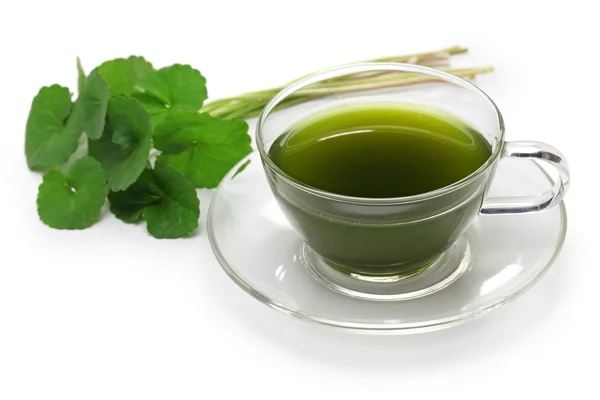
Gotu Kola (Centella asiatica) is an herb that is believed to have potential benefits for circulation, including in the legs. It has been used in traditional medicine systems, particularly in Ayurveda and traditional Chinese medicine, for various health purposes, including its possible positive effects on blood flow and circulation.
Gotu Kola is thought to promote circulation by strengthening the walls of blood vessels and improving the flow of blood, which may help with conditions related to poor circulation, such as varicose veins and swelling in the legs. However, it’s important to note that the scientific evidence supporting these claims is somewhat limited, and more research is needed to establish its effectiveness conclusively.
Usage Ways:
1. Gotu Kola Supplements:
- Gotu Kola is often available in supplement form, such as capsules, tablets, or liquid extracts.
- Follow the recommended dosage on the product label. Typical dosages may vary, but a common range is around 60-180 mg per day.
2. Gotu Kola Tea:
- You can make Gotu Kola tea using dried Gotu Kola leaves. Steep about 1-2 teaspoons of dried leaves in hot water for 5-10 minutes.
- Drink the tea once a day. Note that the taste may be somewhat bitter.
3. Topical Use:
- Gotu Kola creams or ointments are available and can be applied topically to the skin. They may be useful for addressing skin-related issues or promoting circulation in specific areas.
Hawthorn
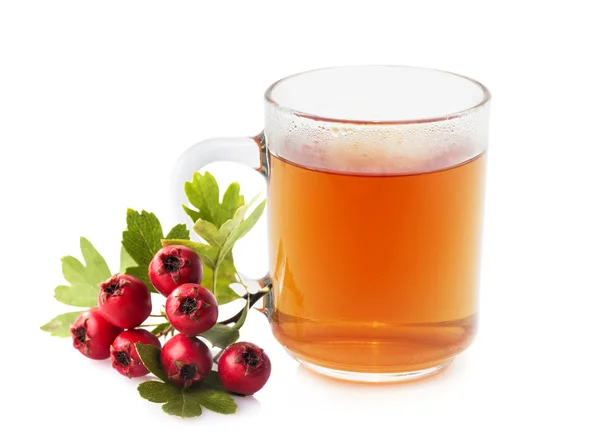
Hawthorn, specifically the extract from the hawthorn plant (Crataegus), has been traditionally used in herbal medicine to support cardiovascular health. It is believed to have certain properties that can potentially benefit circulatory health. However, it’s important to note that while some people use hawthorn for various circulatory issues, its effectiveness can vary from person to person, and it may not be a guaranteed solution for everyone.
Hawthorn is thought to work by dilating blood vessels, improving blood flow, and potentially reducing blood pressure. This, in turn, could have a positive impact on leg circulation. It’s often recommended as a complementary approach to support overall heart health and circulatory function.
There are a few ways to use hawthorn for leg circulation:
- Take a hawthorn supplement. Hawthorn supplements are available in capsule, tablet, and liquid form. The recommended dosage varies depending on the product you are using, so be sure to follow the directions on the label.
- Make a hawthorn tea. To make hawthorn tea, steep 1-2 teaspoons of dried hawthorn berries in a cup of hot water for 5-10 minutes. Strain and drink.
- Use hawthorn topically. Hawthorn can also be used topically to improve circulation. To do this, mix a few drops of hawthorn extract with a carrier oil, such as jojoba oil or coconut oil, and massage it into your legs.
Rosemary
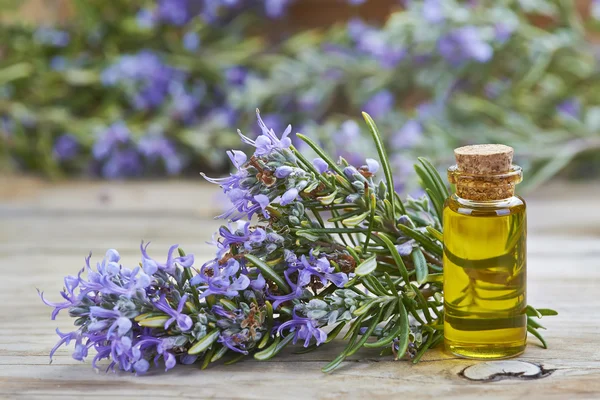
Rosemary is a culinary herb that has also been used traditionally to improve circulation. It contains compounds that may help to dilate blood vessels and improve blood flow.
There are a few ways to use rosemary for leg circulation:
- Drink rosemary tea. To make rosemary tea, steep 1-2 teaspoons of dried rosemary leaves in a cup of hot water for 5-10 minutes. Strain and drink.
- Massage rosemary oil into your legs. To do this, mix a few drops of rosemary essential oil with a carrier oil, such as jojoba oil or coconut oil, and massage it into your legs.
- Take a rosemary bath. Add a few drops of rosemary essential oil to a warm bath and soak for 15-20 minutes.
It is important to note that rosemary oil is very potent and should be used with caution. It is best to do a patch test on a small area of skin before using it to make sure you do not have any allergic reactions.
Here are some additional tips for using rosemary to improve leg circulation:
- Use fresh rosemary leaves whenever possible. Dried rosemary leaves still have some of their beneficial compounds, but fresh leaves are more potent.
- Be careful not to overcook rosemary. Overcooking can destroy some of the beneficial compounds.
- Use rosemary in combination with other herbs that promote circulation, such as ginger, cayenne pepper, and garlic.
More Things You Can Do
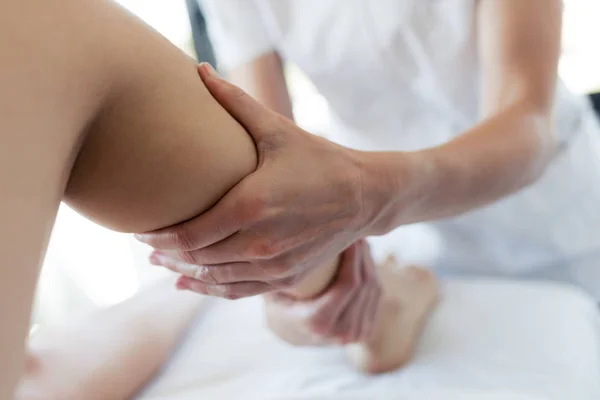
In addition to using herbs, there are other things you can do to improve leg circulation, such as:
- Exercise regularly
- Maintain a healthy weight
- Elevate your legs when you are sitting or lying down
- Avoid wearing tight clothing or shoes
- Avoid crossing your legs when you are sitting
- Massage your legs regularly
If you have any concerns about your leg circulation, be sure to talk to your doctor.
Herbs For Blood Circulation In Legs: FAQ
Q1: Are there any side effects to using herbs to improve blood circulation?
Some herbs may have side effects, especially if you are taking them in high doses or if you have any underlying health conditions. For example, cayenne pepper can irritate the skin, and garlic can cause stomach upset. It is important to talk to your doctor before using any herbs, especially if you are taking any medications.
Q2: How long does it take to see results from using herbs to improve blood circulation?
It may take several weeks or even months to see results from using herbs to improve blood circulation. It is important to be patient and consistent with your treatment.
Q3: Can I use multiple herbs together for better results?
Combining herbs should be done with caution and under the guidance of a healthcare professional. Some combinations may interact with each other or with medications.
Q4: How do I know which herb is right for me and my specific condition?
Consult a healthcare professional who can assess your individual needs and provide guidance on the most suitable herbs and treatments for your situation.
Q5: Can herbs replace medical treatment for circulatory issues?
Herbs should not replace medical treatment, especially for serious circulatory problems. They can be used as complementary approaches, but consult a healthcare provider for a proper diagnosis and treatment plan.
